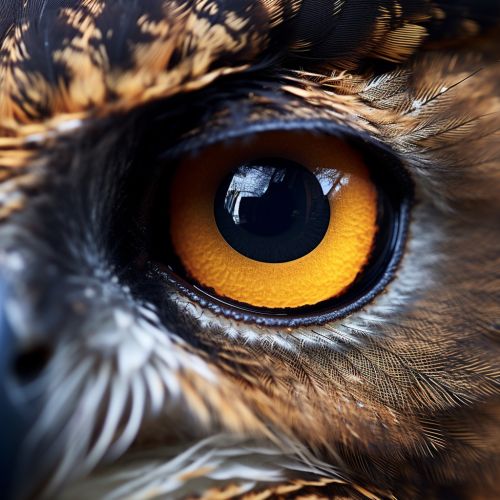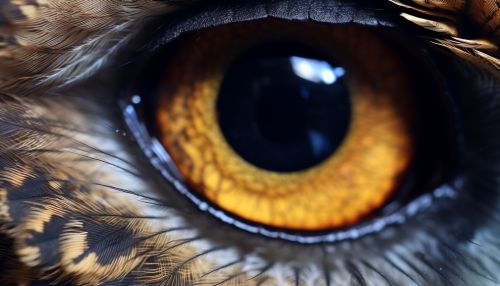Sensory Ecology of Nocturnal Animals
Introduction
Sensory ecology is a subfield of ecology that focuses on how organisms acquire, process, and respond to information from their environment. This article specifically explores the sensory ecology of nocturnal animals, which have evolved unique sensory adaptations to survive and thrive in the darkness of night.
Sensory Adaptations in Nocturnal Animals
Nocturnal animals have developed a variety of sensory adaptations to help them navigate their environment, find food, and avoid predators in low-light conditions. These adaptations can be broadly classified into visual, auditory, olfactory, and tactile adaptations.
Visual Adaptations
Nocturnal animals have evolved several visual adaptations to see in the dark. One of the most common adaptations is the presence of a tapetum lucidum, a layer of tissue in the eye that reflects light back through the retina, increasing the light available to photoreceptors. This is what gives animals like cats and dogs their characteristic eye shine.


Another adaptation is the increased number of rod cells in the retina. Rod cells are more sensitive to light and motion than cone cells, which are more involved in color perception. Nocturnal animals like owls and bats have a higher ratio of rod cells to cone cells, allowing them to see better in low-light conditions.
Auditory Adaptations
In addition to visual adaptations, many nocturnal animals have developed enhanced auditory senses. For example, many species of bats use echolocation to navigate and find prey in the dark. They emit high-frequency sounds that bounce off objects in their environment, and by listening to the echoes, they can determine the location, size, and shape of these objects.
Olfactory and Tactile Adaptations
Olfactory and tactile adaptations are also common in nocturnal animals. Many nocturnal mammals, such as skunks and raccoons, have a highly developed sense of smell to locate food. Similarly, nocturnal insects like moths and beetles use chemical cues, or pheromones, to find mates in the dark.
Tactile adaptations include the use of whiskers or antennae to navigate in the dark. For example, rats and mice use their whiskers to sense their environment, while insects like cockroaches use their antennae to detect chemical and physical information in their surroundings.
Impact of Sensory Adaptations on Behavior and Survival
The sensory adaptations of nocturnal animals have a significant impact on their behavior and survival. These adaptations allow them to exploit niches that diurnal animals cannot, such as hunting or foraging at night when there is less competition and predation risk.
Hunting and Foraging Behavior
The sensory adaptations of nocturnal animals play a crucial role in their hunting and foraging behavior. For example, the echolocation ability of bats allows them to hunt insects in complete darkness, while the keen sense of smell in skunks and raccoons helps them locate food sources that might be hidden or buried.
Predator Avoidance
Nocturnality and the associated sensory adaptations also provide an advantage in avoiding predators. Many predators are diurnal, so being active at night reduces the likelihood of encountering these predators. Additionally, the enhanced senses of nocturnal animals allow them to detect predators early and escape.
Conclusion
The sensory ecology of nocturnal animals is a fascinating field that reveals the intricate ways in which animals have adapted to their environment. These adaptations are not only crucial for their survival but also allow them to exploit unique niches and contribute to the biodiversity of their ecosystems.
